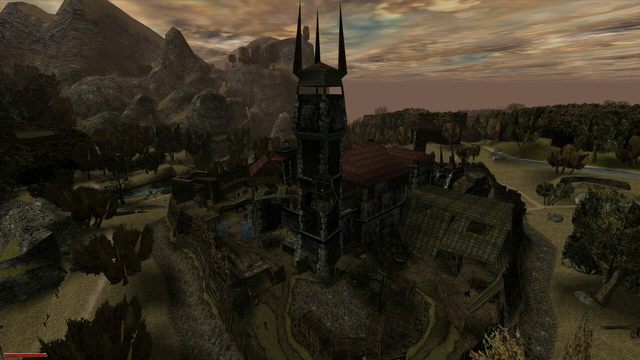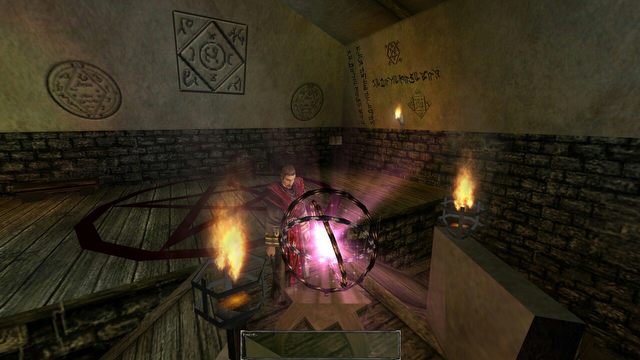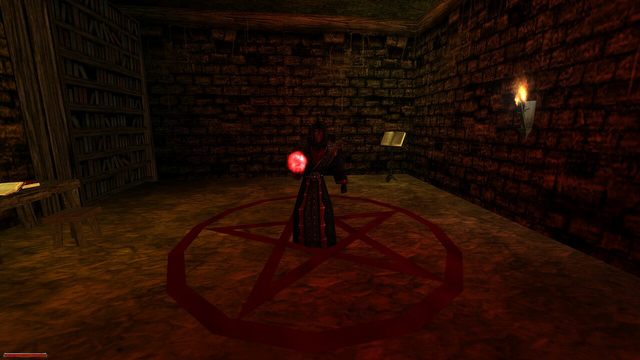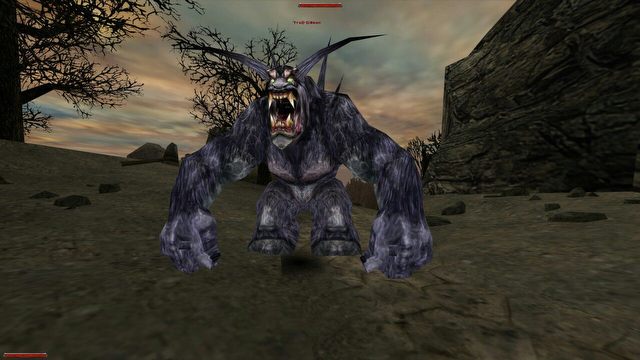Gothic Sequel – the add-on that never was. A cancelled expansion for the iconic RPG
Not many Gothic fans know that back in 2001 Piranha Bytes began working on an expansion under the working title of Gothic Sequel. We give you a glimpse of this forgotten project, pieces of which were incorporated in the later installments of the series.
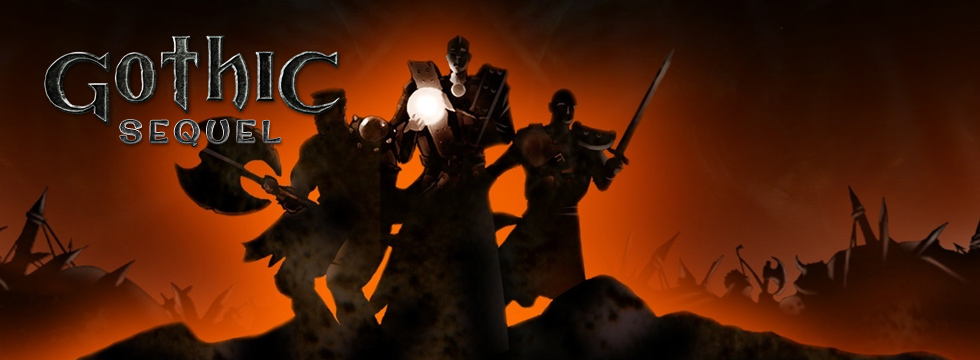
For hardcore Gothic fans, the story of the series is like an emotional roller coaster – an ebb and flow of memories of joy and excitement mixed with sadness, disappointment, and even anger. In the eyes of many, the phenomenal first Gothic and the Gothic II expansion Night of the Raven were the apex of the series; the third installment, in turn, heralded the gradual decline that was to follow. Not many know, however, that the history could have turned out very differently… All thanks to an expansion for the first, now iconic, entry in the Gothic series. An expansion that never came to be.
Up until recently, the expansion hax been shrouded in mystery. Only thanks to an info leak that appeared near the end of the last year on a Russian website World of Players did we learn a decent amount of facts on the project known under the working title of Gothic Sequel. The facts that otherwise may have been forever forgotten are now available across the web to anyone interested. Well then, what was Gothic Sequel meant to become and how much of it found its way into subsequent works of Piranha Bytes? Let’s find out.
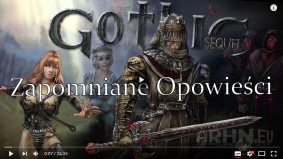
Two Youtube videos served as inspiration and source of information for this article, both created by people who have access to a playable version of the Gothic Sequel expansion, game files and manuals created by Piranha Bytes. You’ll find links to their websites at the bottom of the article, unfortunately they are non-English sources.
To give you an idea of just how serious the matter is, and to vouch for the authenticity of the info acquired by World of Players, let me just say that Piranha themselves took interest in it and threatened to take legal action unless both the thread and game files were removed.
An expansion is not enough
Let’s go back some time into the past, and by „some time” I mean roughly 16 years. It is the year 2001. Gothic is almost done conquering Germany, and some people at Piranha Bytes sit down to work on an expansion for their prized game (meanwhile, the rest of the team is to develop some unknown shooter). In June 2001 the devs start a thread on the user forum of the World of Gothic website, asking the fans for ideas and suggestions for an expansion. The community delivers, providing Piranha with a ton of ideas to be used. The work is in full swing.

August, however, witnesses a development that will have a crucial influence on the future of both the Gothic franchise and Piranha Bytes itself. That month, Phenomedia AG, Piranha’s parent company, begins its cooperation with an Austrian publisher, JoWooD Entertainment. That deal makes JoWooD the global publisher of all Phenomedia games, including all subsequent installments in the Gothic series.
The works on the Gothic Sequel expansion cease in Autumn 2001, when the brass at JoWooD decides to shelve the whole thing. The publisher was keen on achieving commercial success more than anything else, and a full-fledged sequel seemed more promising than an expansion. In fact, Gothic II was to become a hit later on (especially when combined with Night of the Raven), but its success is in no small part thanks to the solutions developed for the Gothic Sequel project. As it turns out, there was more of them in Gothic II than we could have expected.
A chosen one’s work is never done
Alright then, backstory aside, I suppose you’re much more interested in what’s the actual content of the unreleased expansion. The very beginning is almost identical to what we remember from Gothic II. Having finally banished the Sleeper once and for all – or so we all thought – the nameless hero had found his rest under the rubble of the collapsed temple. Not for long, though, as he was soon teleported, half-dead, by Xardas to his tower in the Orc territory. The Necromancer had some bad news to deliver though – the destruction of the barrier surrounding the Valley of Mines had strained the delicate border between the dimensions.
From that point on, the Sleeper was able to send demons to the realm of men; and given some time without anyone doing something about it, he himself would eventually return. Faced with this new crisis, the nameless hero had no other choice but to get busy and deal with the demon once again. The problem was, the protagonist wasn’t at his best at the moment – he’d lost some endurance and skills, the exploding barrier had destroyed his equipment, including runes, the sword Uriziel and the Ancient Ore Armor. The character had once again become a blank page for the player to write on; we all know the drill.
After this brief introduction, Xardas would teleport the protagonist near the Old Camp, which would bring him to the first major novelty – at his destination the hero was to stumble upon Thora, a staff-wielding scout serving king Rhobar II. The king himself would also be present in the former colony, having chosen a mountain fortress (the lair of the stone dragon in Gothic II) as his temporary residence. What the ruler of Myrtana is doing in the Valley of Mines, nobody knows for sure; what we do know is that it would be nice to get there. And that’s where an old trick of Piranha’s would come into play, as it appears in each of their games – to get close to a powerful person, the player would need to complete a series of tasks, proving their loyalty and usefulness.
Dealing with the Sleeper
The nameless hero’s next intended move would be to regain the focus stones, previously gathered at the request of water mages in the first Gothic. The artifacts, along with a significant number of 1000 pieces of new dark ore, would serve to repair the veil separating the dimensions of men and demons, preventing the Sleeper from threatening the realm. And while combining focus stones and ore is a thing we’d already done when blowing up the barrier (Gothic), acquiring the new resource, however, was to be a completely new, original activity.
The task, as none before, was to emphasize worker management. Our workforce would have to be first convinced to work for us – with money, skill training, or favors. The miners would also need some tools and protection. As we know (mainly thanks to the second chapter of the original Gothic), work in the mines is anything but safe. Only after he has secured the future of the mining industry on Khorinis, could the nameless hero return to the mountain fortress bringing the ore for the fire mages.
The final portions of the expansion were to lead to the unavoidable second confrontation with the Sleeper. The mages would, of course, botch the whole thing – having done a sloppy job when creating the barrier around the colony, they couldn’t have done worse when performing the ritual this time. Their failure leads to the creation of a new portal, which enables the demons to appear more numerous than ever, and the second coming of the Sleeper becomes a most urgent problem. That would be the moment for the nameless hero to step in to perform yet another ritual together with Xardas, taking place in the shrine of Y’Berion, at the old camp in the swamps. Rumor has it that that’s where the player was to decide whether to banish the Sleeper for good or summon him. Interestingly, the players were given a similarly impactful choice only in the finale of Gothic 3, as the decision whether to destroy or hold on to the Claw of Beliar in the finale of Night of the Raven hardly qualifies.
Echoes of the past
While the expansion for the first Gothic was never to see the light of day, some of the ideas, plots, characters, or skills it would have featured were successfully employed later on, modified or not, in other works from the same developer. Some elements originally intended to debut in Gothic Sequel can be found in Gothic II, Night of the Raven, Gothic 3, or even in Risen 3: Titan Lords. Which ones, you ask? Quite a lot of them actually. I suppose the outline of the plot has already given you some ideas.
The intro to Gothic II was borrowed, almost entirely and without any modifications, from the would-be project (even the design of Xardas’ tower was left intact, resembling architecture of the mining colony more than anything we can find on the rest of Khorinis). This makes sense, as the starting points of both games were virtually carbon copies. In both of them the destruction of the barrier had demolished the castle in the former old camp. The only difference was that in Gothic II the scale of destruction was greater, which was in turn explained to be the work of dragons. The actual explanation is a bit more practical. The plot of Gothic II had no use for the so-called outer ring, so it could be discarded. The unreleased expansion, however, assumed something else – the location was intended to become a marketplace and a quarantine zone, where a group of healers was to fight against the demonic plague.
This would be a good moment to mention the new guilds, archetypes of paladins and dragon hunters from Gothic II. Gothic Sequel was to feature royal guards and demon hunters. The former, not surprisingly, would be stationed alongside the king in the mountain fortress (fun fact: their basic armor model can be seen in the intro to the first game). The latter were to be based in the new camp. Piranha Bytes was to return to the demon hunters concept several years later – the warriors would become one of the playable factions in the third installment of the Risen series.
Sequel could hardly become a decent expansion without any plans to introduce news skills – and in fact, there were several of them. Crafting would enable the nameless hero to become a bowyer; not the most popular job, that’s for sure. Healers were to teach him alchemy. Lester would train the protagonist in the art of rune making (the latter two skills eventually appeared in Gothic II), and we could also learn to cook (this one can be found in Gothic 3). Player’s offensive capabilities would be expanded with the ability to wield a battle staff, courtesy of the aforementioned Thora. Her 3D model (as well as the staffs) also appeared in Gothic II… in the sex scene with Nadia in the Red Lantern brothel.
New-old friends
Having mastered the new weapons, we were to be given a wide array of new enemies to try it out on, some of which were later used in Gothic II and Night of the Raven. That’s how the intended demonic versions of, for example, Troll or Shadowbeast, respectively, became dark troll and the skeleton of a shadowbeast. In Jarkendar, in turn, we could encounter a rare Scavenger that used the model of the intended demonic version. The most spectacular, however, is the case with possessed fire mages (or possibly the members of the Brotherhood of the Sleeper, in compliance with the canon) – they look exactly the same as the Seekers, enemies present since the third chapter of Gothic II.
Finally, the expansion was to feature several characters whose names later made their way into the subsequent games from Piranha. One noteworthy example would be lord Hagen. The leader of the paladins, sent to Khorinis by the king in Gothic II, in the Sequel was to be the king’s right hand, guarding the monarch’s throne in the mountain fortress. Knowing how important his character was in Gothic II, we can safely assume that he was transferred without any cuts.
Most of the ideas developed for Gothic Sequel were employed in Gothic II; there are three among them, however, which are more closely connected with the final installment of the series. Sequel was to expand the elements of the battle arena, which would enable us to increase our reputation as a warrior, as well as our financial reserves. Even the entire reputation system, so essential in the third Gothic, had begun as a concept for Gothic Sequel. The developers wanted to design a system that would make the NPCs react differently towards us based on our behavior and actions. The last point would be the destruction of rune magic by Xardas, which would tip the scales of war in favor of the Orcs.

King Rhobar II and Hagen in his royal guard armor. The appearance of the king matches his look from the intro to the first Gothic.
Regretful loss or good riddance?
We can only guess how the history of the Gothic series would have turned out should Gothic Sequel had been released as it was intended to be. Certainly, the most affected would be Gothic II, as it relied heavily on the ideas developed for its would-be predecessor. I can hardly see the devs intending to repeat as much content as they did. That’s assuming Gothic II would even be developed. It’s hard to guess what the critics would say of the expansion, and even harder to anticipate its sales.
In the end, I believe it was for the better, as the community holds significant words of praise for both Gothic II and Night of the Raven, no matter what happened with the series later on. As for the Gothic Sequel itself, nobody can tell for sure. At present, when the expansion had been dug up from the rubble of the past under which it was laid to rest, perhaps it will yet return as a mod and an alternative take on the adventures of the nameless hero. I think the project is intriguing enough so as to deserve another chance.
ABOUT THE AUTHOR
I play RPGs when I can, but since those precious moments are few and far between, I had to learn to carefully choose my games. While there’s been a steady supply of role-playing games lately, the first Gothic remains my first and purest love. I’ve completed every work by Piranha Bytes at least once, multiple times in the case of the first two installments of Gothic, twice in the case of Gothic 3. I’m less eager to see Elex than I was to see Risen when it was first announced.
DISCLAIMER
Since we are not in possession of a playable version of the Gothic Sequel expansion ourselves, the article was based mostly on the two following sources:
- CANCELLED OFFICIAL GOTHIC 1 ADDON – Gothic Sequel (YouTube channel of The History of Khorinis mod for Gothic II)
- Gothic Sequel | Zapomniane Opowiesci (YouTube channel of arhn.eu, in Polish)
